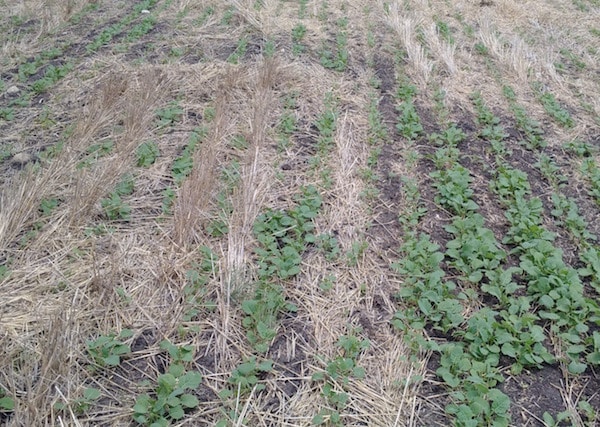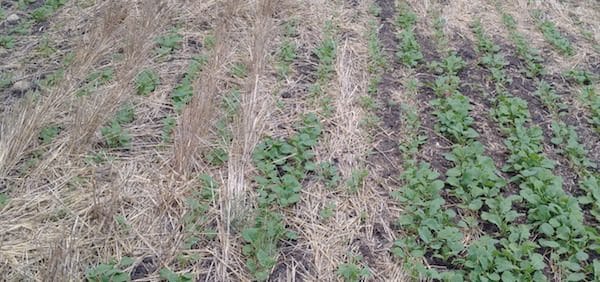Most crops are now emerged and getting established. This is a good time to take a close look for any issues that may need immediate action and crop establishment mistakes that can be corrected next year.

1. Plant populations. Are your canola populations on target? We recommend 7 to 10 plants per square foot, and 5 plants per square foot is the minimum for canola to reach its yield potential. If populations are not on target, try to figure out why. Some factors, including low seeding rates or seeding too deep, can be corrected through management. Plants emerging from depth are more at risk from seedling diseases, for example. If seed performance is in question, talk to the seed company. Deadlines for claims are approaching.
2. Bare patches. Large areas with no or few plants can have many causes, including cutworms, wind, frost, seeder malfunction. Patchy emergence can also result from uneven residue distribution.
3. Herbicide performance. Are weeds living when the herbicide should have killed them? If weeds show no symptoms of herbicide damage, herbicide resistance is one possibility. Others are that weeds were too large, conditions at the time of spraying were not favourable for control, or weeds were not up at the time of spraying. In conditions of rapid growth, seedlings emerging after the spray pass can be almost the size of the sprayed plants that have not changed since application. Compare results with notes from the day of application. Consider what might have gone wrong based on conditions at the time of spraying. If you have a performance claim, get it into the company soon. Deadlines are looming.
4. Blackleg lesions. Look for lesions and the tiny pepper-like specks inside the lesions. Infection before the 4-leaf stage is most likely to cause yield loss. Spraying fungicide at the 2- to 4-leaf stage is most likely to provide an economic return, especially if symptoms are present already.
5. Small clubroot galls. Dig up plants in low spots and at field entrances to look for swelling on the roots — signs of early infection.
6. Diamondback moths. Diamondback moths have been found in a few locations. When you find them, leave them be. Seeing the adults now does not mean the larvae will cause problems later. This may seem odd for a scouting reminder, but the point of including them on this list is to remind growers and agronomists that beneficial insects have been doing a very good job at keeping diamondback moth below economic thresholds.
7. Insects in general. We’re close to the end of the flea beetle risk period, but later-seeded crops are still at risk. Cutworms are still present, although presence of pupae suggest that some species are close to the end of their larval cycle. Cabbage seedpod weevil have been seen in some fields in southern Alberta. Spraying is not warranted until early flowering, but some very early fields may be near or at that stage.
8. Insecticide performance. Did seed treatments work as expected? If in-crop insecticide was applied, was management of flea beetles or cutworms sufficient?
9. Nutrient deficiency symptoms. Nutrient deficiencies, unless severe, rarely show themselves this early in the season. Consider that excess moisture can cause temporary nutrient deficiency. Once the crop recovers, uptake of nutrient resumes.
10. The weather outlook. An accurate nearby forecast can help you time in-crop applications, especially herbicides and top-dress nutrients.

